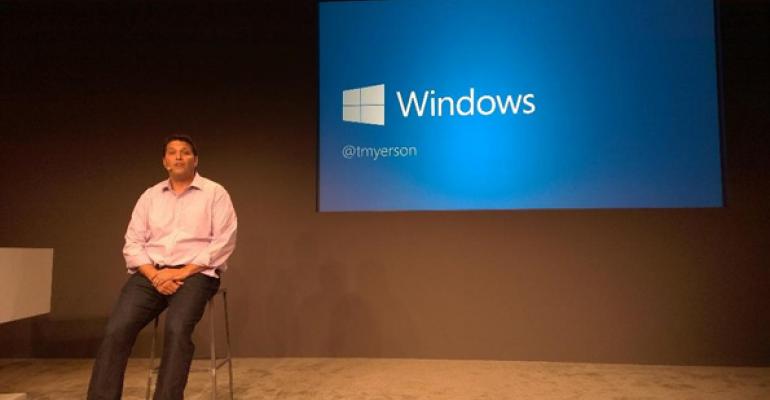Microsoft announced the next version of Windows at a special event in San Francisco on Tuesday. But instead of calling it Windows 9, as was originally planned, Microsoft will brand the release as Windows 10 to further distance it from Windows 8. The marquee feature? It will please fans of both Windows 7 and Windows 8.
"I think we'd all say Windows was at a threshold," a tongue-in-cheek Terry Myerson said while opening the event. ("Threshold" was the original codename for Windows 10.) "Let's talk about the new Windows."
After stepping through some joking references to names that Microsoft considered but dropped—Windows 9, the "natural name" for the release, and Windows One, which would follow the One Microsoft naming convention—Mr. Myerson said that this new Windows was so big they needed to skip a version number. So Windows 9 became Windows 10.
"This isn't an incremental release," he said. "It's a new Windows."
Windows 10 is a single product family that will run on devices as diverse as Internet-connected sensors, phones, tablets, PCs, game consoles and even cloud-based data centers, Myerson said, and features a single store and application platform. But it will feature different, tailored experiences depending on the device type. Tuesday's event was all about PCs and tablets, but Microsoft will address server and cloud, phones, and other device types at later events.
Tuesday's event also focused specifically on enterprise-related features, though Microsoft will reveal consumer features in early 2015 and then developer features in April 2015. It expects to ship Windows 10 by mid-2015, though the final release will be based on user feedback.
While many will focus on very specific features—check out my articles Microsoft Announces Windows 10 and Windows 10 for the Enterprise for a rundown—the big advance here is a bit more general. With this release, Microsoft will provide a familiar and usable upgrade to both Windows 7 and Windows 8 users.
How it does this, given the separate mobile and desktop environments that currently grace Windows, is interesting. For Windows 7 upgraders, or any one on a traditional, non-touch PC, Windows 10 will look and work much like the system to which they're accustomed, and will present a familiar desktop-based user interface. For those on tablets, however, Windows 10 will work much like Windows 8 and will provide improved versions of the so-called edge UIs provided on that system.
Microsoft will even address the 2-in-1 PCs that provide both interfaces in a unique way, though that functionality won't debut until after the Technical Preview that ships to interested parties on Wednesday via the Windows Insider Program. Through a feature called Continuum, Windows 10 will adapt between tablet and keyboard modes on the fly.
"The diversity of the Windows audience is finally addressed by Windows 10," Microsoft's Joe Belfiore said that the Tuesday event. "We're adapting the core user experience to handle that diversity of users and devices."





